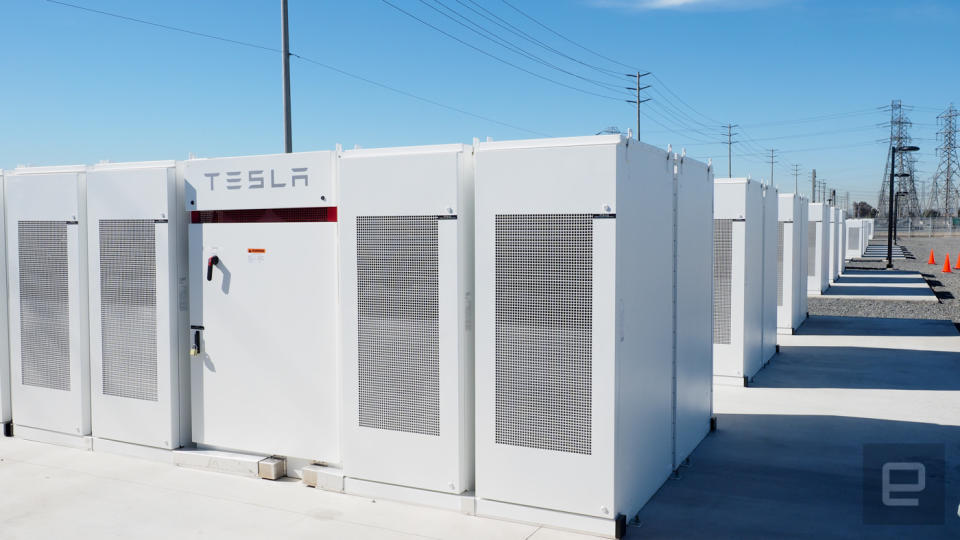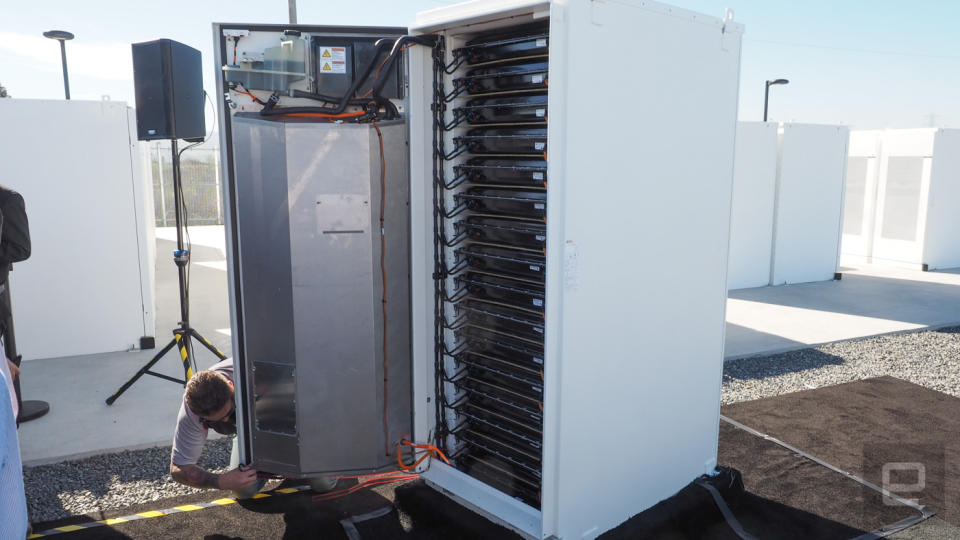Tesla's Powerpacks are now lighting up California's grid
The Mira Loma station can power 15,000 houses for four hours.

"Batteries are boring when they are successful." That's Tesla Chief Technology Officer JB Straubel, speaking on Monday to an audience of reporters, employees and government officials sitting in the middle of the new 20-megawatt Mira Loma energy storage station in Ontario, California. Behind him, row upon row of Tesla Powerpacks and industrial inverters filled the fenced-in 1.5-acre lot. Those gleaming white battery boxes, though boring looking, are capable of powering up to 15,000 homes for four hours during peak times, or roughly 2,500 homes for an entire day. This is an important development indeed, because it means utilities won't have to fire up fossil fuel-powered stations to fill the energy gaps.
Electric utility company Southern California Edison (SCE) teamed up with Tesla to bring one of the world's largest electron-storing solutions to life in less than six months. In fact, it only took three months to go from groundbreaking to running. The urgency came down to a gap in the grid created by the loss of the Aliso Canyon natural gas storage facility.
While getting both a large company like SCE and the local government to move quickly on a project is difficult, Tesla had no problem delivering its large batteries to the site; the Powerpack containers and companion inverters are pretty much plug and play. Once the concrete was poured, the companies installed the system and connected it to the grid.

When the energy-storage station went online, the large batteries began pulling power from the grid when there was an surplus. Before battery systems like this were available, any extra electricity created by power stations or from renewable sources was wasted. The utility can then dole out the energy from the Powerpacks during an outage or when the grid is maxed out (read: in the summer when everyone has their AC blasting).
This is a huge step toward reducing the grid's reliance on fossil fuel-generated electricity. Currently, one major issue with renewable sources such as wind and solar is that if they're generating more power than the system needs at that moment, it's wasted. But with battery stations like Mira Loma, those electrons can be stored for later use.
SCE CEO Kevin Payne told the audience during yesterday's station tour that this isn't a pilot program or test. "This project is part of our vision at Southern California Edison," he explained.

And you can expect to see more of these energy-storage stations in the next few years. So when it's 100 degrees and you're blasting your AC, remember that some boring boxes in the middle of a field are making it possible while reducing the amount of pollution being pumped into the sky.









